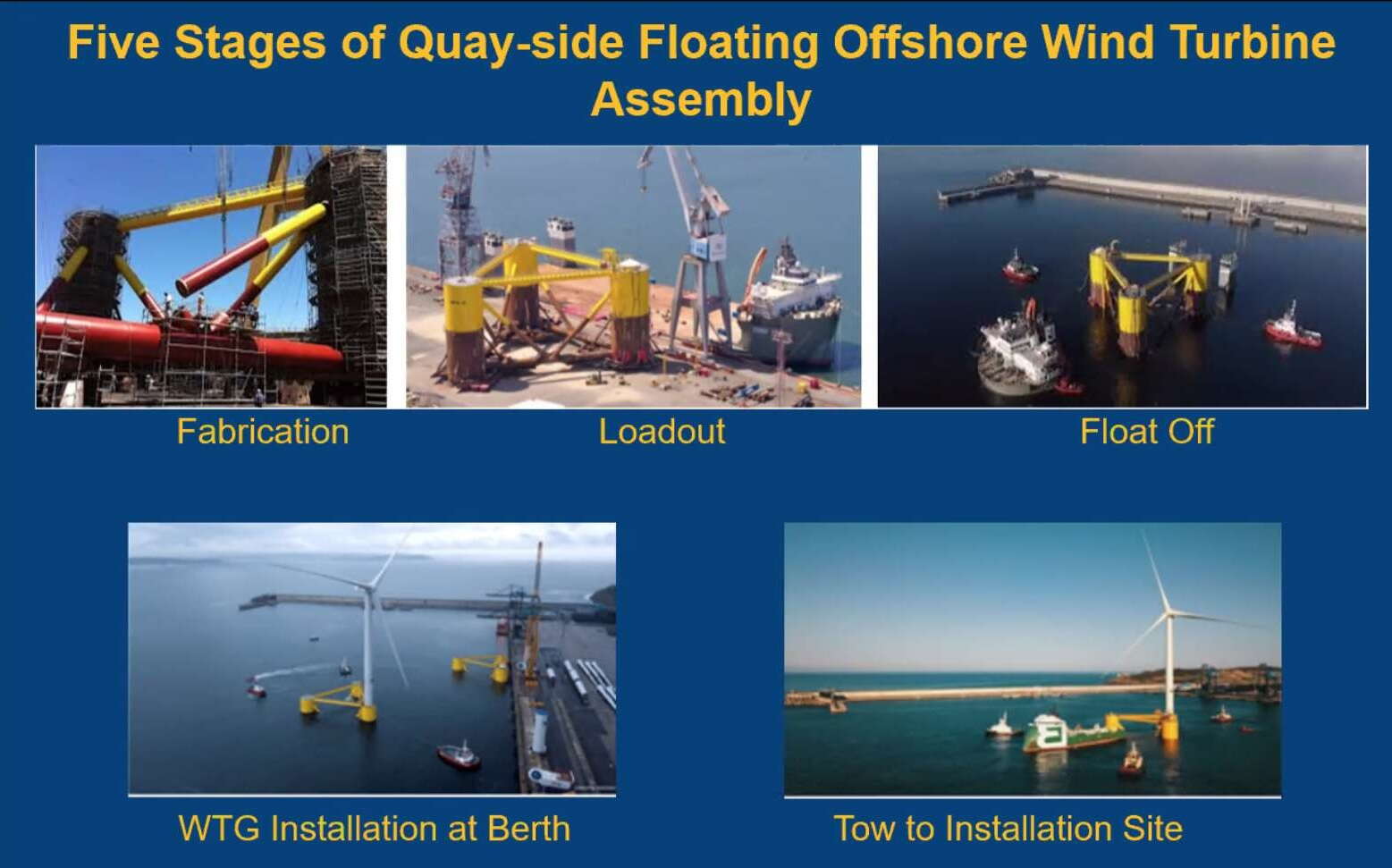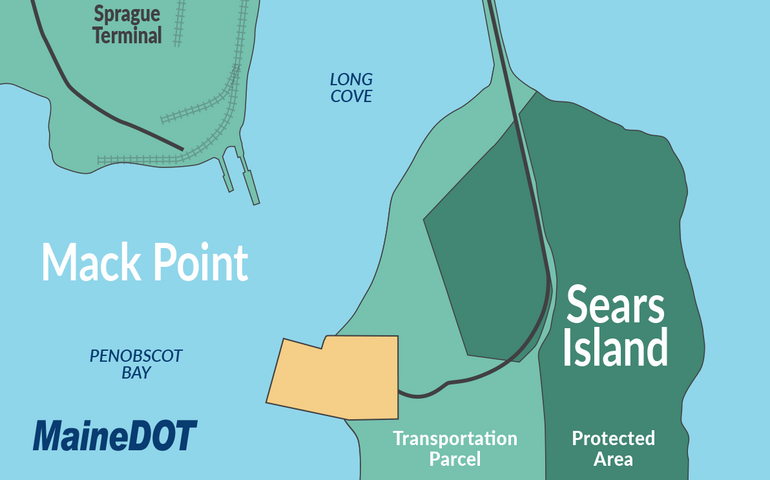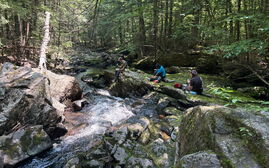
Sears Island selected as site of $500M Maine offshore wind-power port
 Courtesy / State of Maine
The tan-color area shown on this map is the portion of Sears Island that would be used to support offshore wind turbines, the state announced Tuesday.
Courtesy / State of Maine
The tan-color area shown on this map is the portion of Sears Island that would be used to support offshore wind turbines, the state announced Tuesday.
Four years after identifying state-owned Sears Island among several possible ports to help build Maine’s nascent offshore wind industry, Gov. Janet Mills said Tuesday that the site is the preferred one.
Estimated costs for constructing the base on a portion of the Waldo County island are approximately $500 million. The state is seeking funding, including federal sources.
The port proposal is subject to extensive state and federal permitting processes, including assessments of environmental impacts and alternative sites. The Maine Department of Transportation, on behalf of the state, intends to apply for permits later this year, which will also include additional opportunities for stakeholder and public input on the project.
Substantial construction
Studies determined that the parcel is the most feasible development site for a “marshaling port” based on factors including location, logistics, cost and environmental impact, as well as input from port and offshore wind stakeholders and from technical and engineering analyses.
Marshaling ports, also called staging ports, are assembly areas needed to build and deploy offshore wind turbines.

The state evaluated Sears Island and an existing marine terminal at Mack Point, in the mainland town of Searsport, across Long Cove from the island.
Sears Island was the best choice, said Mills, because it is already owned by the state, designated for the purpose of port development, projected to cost less and expected to result in less environmental harm. Unlike Mack Point, the Sears Island site is not expected to require dredging.
“With that said, I recognize that the construction of a port is not insubstantial, and it will be a change to an area that is enjoyed by many people,” Mills continued.
Mills said that advancing an offshore wind industry in Maine is expected to create good-paying jobs and deliver clean, renewable energy to stabilize and reduce energy prices.
Sears Island covers 941 acres. In 2009, the island was divided into two parcels: roughly 600 acres was placed in a permanent conservation easement held by the Maine Coast Heritage Trust, while the remaining land was reserved by Maine Department of Transportation for future development.
The site selected by the state is expected to take up about 100 acres, or a little more than one-tenth of the island.
The proposed port would provide deepwater access, and would include a purpose-built facility for floating offshore wind fabrication, staging, assembly, maintenance and deployment.
Wind array
A year ago, the state released the Maine Offshore Wind Roadmap, a plan that offers detailed strategies for developing the industry.
According to the plan, there are about 80 Maine companies already engaging in the U.S. offshore wind industry. And the industry could generate more than $100 billion in private investment by 2030.
The release of the roadmap came a month after the federal Bureau of Ocean Energy Management advanced an application by the state to lease a proposed site in federal waters in the Gulf of Maine for a floating offshore wind research array.
As the first project of its kind in the U.S., the research array would foster research into the cost-effective operation of floating offshore wind and how it interacts with the marine environment, wildlife, the fishing industry, shipping and more.

The array is proposed to include 10-12 turbines on semi-submersible floating concrete platforms designed by the University of Maine’s Advanced Structures and Composite Center.
Deepwater access
The roadmap determined that development of a port facility for the industry was a priority.
Patrick Woodcock, president and CEO of the Maine State Chamber of Commerce, said development of port infrastructure is a cornerstone in realizing the potential economic dividends of an offshore wind industry and further expanding the state’s international trade.
“There is an acute scarcity of unobstructed deepwater access across the eastern seaboard, and Maine has the opportunity to develop a world-class facility and finally realize the vision of the state’s three-port strategy,” said Woodcock.
The selection of the site followed an extensive public stakeholder process led by the Maine Department of Transportation and Maine Port Authority to consider the state’s primary port development options, including multiple potential sites in the Port of Searsport, the Port of Eastport, and the Port of Portland.
“Ports are not just about transportation; they are important economic development engines in their own right,” said Wade Merritt, president of the Maine International Trade Center. “The Searsport project will attract, create, and sustain jobs and opportunity for all types of businesses, as well as their workers and their families, all along the coast and across the state.”
Economic development
The selection won the approval of the Maine AFL-CIO.
“This site offers the amount of space required for the development of commercial wind projects, while protecting valuable fishing grounds upon which many local families depend,” said Cynthia Phinney, president of the Maine AFL-CIO.
Phinney said her organization agrees that the project will provide good jobs with family-sustaining wages and benefits, as well as many training opportunities for a diverse workforce of the future.
“Once constructed, this port will facilitate work for decades in an area that has suffered the devastating impacts of shuttered industries,” Phinney said. “The increasing frequency of severe weather is wreaking havoc on working class communities in Maine. Unions here are proud to play their part in the fight against climate instability.”
Critical first step
A port facility is a critical step to developing a floating offshore wind industry, said Habib Dagher, the founding director of the University of Maine Advanced Structures and Composites Center, which developed the VolturnUS floating wind turbine platform.
The port will be used to produce floating turbines, designed in Maine using technology developed by University of Maine researchers, and towed out and moored beyond the horizon to harness clean energy for our state, Dagher said.
“Much like creating a shipyard, this port will usher in a new era of energy independence enabling us to more affordably heat our homes, stabilize our energy costs, and create good-paying Maine jobs,” said Dagher.
Decades ago, Maine invested millions of dollars in transportation funds for port development on Sears Island, including funding for navigation improvements that rendered sufficiently deep water to avoid the need for new dredging there.
That work made the island’s selection a commonsense decision, said David Gelinas of the Penobscot Bay & River Pilots Association.
“A Sears Island location for this new facility will minimize impacts from southerly winds and seas, while providing safe shelter for smaller vessels that will be necessary to service the port,” said Gelinas. “The site offers the most direct approach in and out of the Searsport navigation channel and allows the existing docks at Mack Point to continue accommodating the myriad vessels necessary to serve Maine’s businesses and consumers.”
Kelly Flagg, executive director of Associated General Contractors of Maine, noted that Sears Island provides access to the existing federal channel.
“The dedicated 300 acres of land will accommodate the 100-acre parcel for port infrastructure and allow the island to continue offering benefits for recreation activities,” Flagg added.
An active seaport since the 1700s, the Port of Searsport is considered to be among the most versatile port sites on the East Coast. In March 2020, Mills directed MaineDOT to study the Port of Searsport to assess needs to support Maine’s offshore wind industry.
The study was delivered in November 2021. In March 2022, MaineDOT announced the creation of an Offshore Wind Port Advisory Group, held public meetings in 2022 and 2023 and toured existing port facilities in Searsport and Eastport to inform its work.














0 Comments